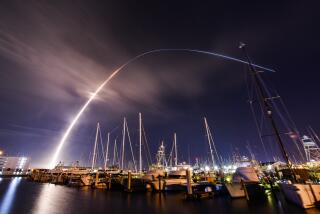Cassini Spacecraft’s Plutonium Fuel
- Share via
* The report of a rip in the insulation of the Cassini probe (Sept. 4) brings into focus the vulnerability of space flights to small, unforeseeable problems. The Titan 4B rocket launching the Cassini probe has already had a fuel leak and exploded shortly after launch in 1993. The hazards of these problems are amplified when the payload of 72.3 pounds of plutonium-238 is considered.
As a future physician, presently studying at UC Irvine, I do not wish to treat cancers born of preventable, man-made exposure. A reentry of the Cassini on its fly-by of the Earth in 1999 could result in the release of the plutonium in an aerosol form, which is easily inhaled and deadly.
The ability of plutonium-238 to cause cancer at doses of less than 30 millionths of a gram is without question. What appears to be at issue is the likelihood of an accident. As the Challenger launch reminds us all, even the best planning by the brightest minds can result in disaster. Because NASA plans to use plutonium-238 as an energy source in its future deep space missions over the next 10 years, it is important that the public knows the dangers.
KEVIN HOOVER
Irvine






